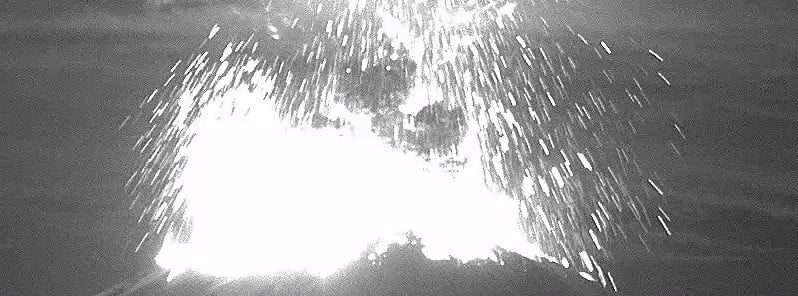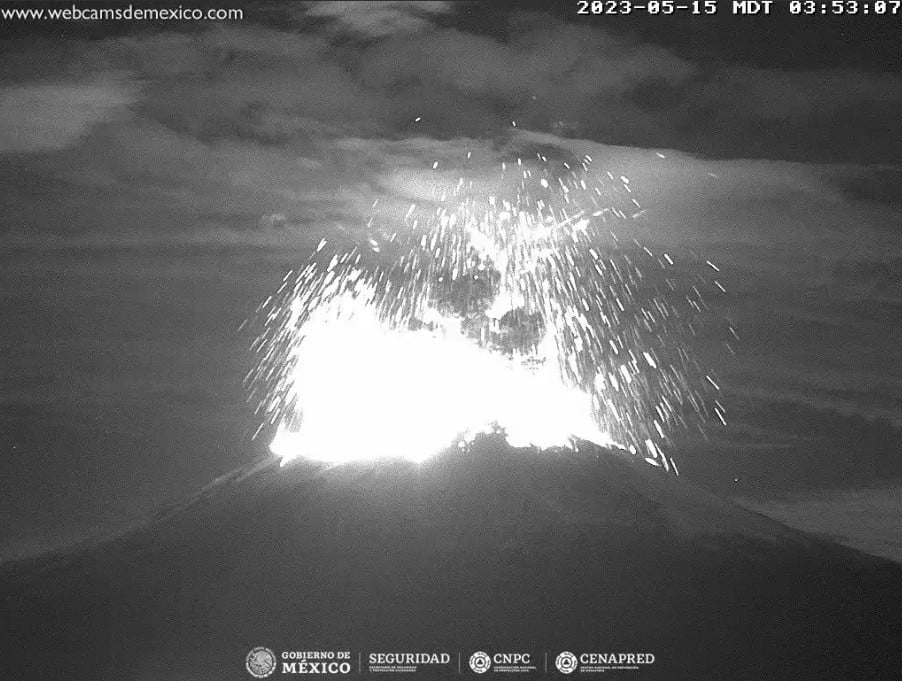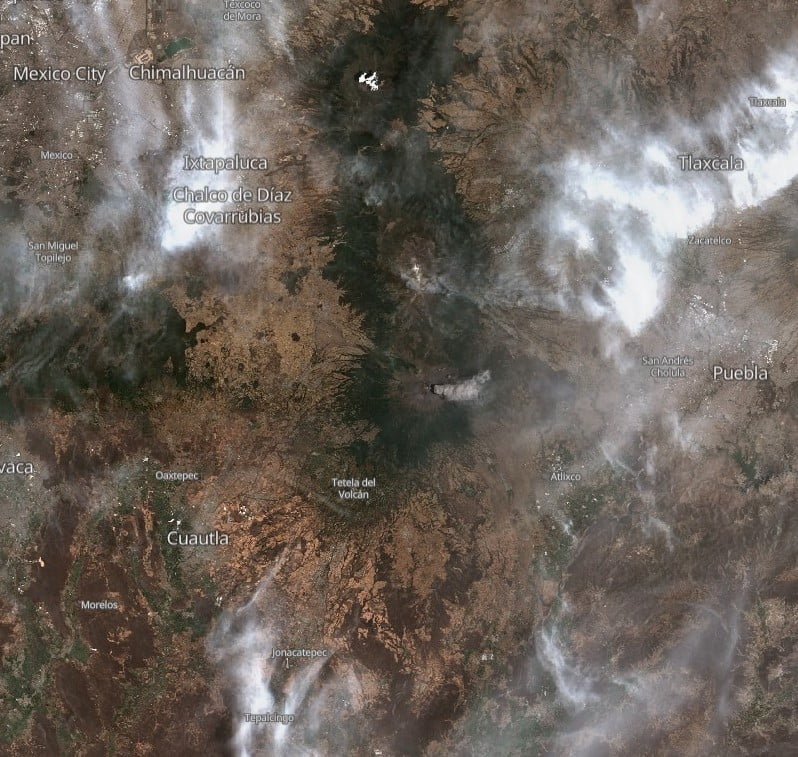Explosions at Popocatepetl volcano, heavy ash suspend classes in 11 municipalities, Mexico

Explosive eruptions at Popocatepelt volcano, Mexico released large amounts of ash over the past couple of days, forcing the government of Puebla to suspend face-to-face classes in at least 11 municipalities.
Face-to-face classes will be suspended on May 18, and last until the situation improves.
In addition, the Puebla Civil Protection authorities announced on May 17 that they will evacuate five neighboring communities, distributed among four different municipalities, in case the Center National Disaster Prevention (CENAPRED) increases the volcanic alert traffic light to Red Phase 1, since Yellow Phase 3 — currently in effect — is still preventive.
4 evacuation shelters are open for people who need them, in addition to three schools and one sports unit in San Pedro Cholula and Huejotzingo.
In 24 hours to 17:00 UTC on May 17, the monitoring systems of the Popocatépetl volcano registered 155 exhalations accompanied by water vapor, volcanic gases and ash, 1 moderate and 1 minor explosion. Additionally, 748 minutes of high-frequency tremor were recorded, and 1 volcano-tectonic event with a magnitude of 1.1.
During the previous 24 hours, the network registered 96 exhalations, 3 moderate explosions, and 1 066 minutes of high-frequency tremor.
On May 14 and 15, 217 exhalations were reported, 8 moderate and 5 minor explosions as well as 455 minutes of tremor.

CENAPRED is urging residents and tourists not to climb to the volcano’s crater and respect the exclusion radius of 12 km (7.4 miles).
Likewise, in case of heavy rains, the population is urged to move away from the bottom of the ravines due to the danger of mud and debris flows.

Geological summary
Volcán Popocatépetl, whose name is the Aztec word for smoking mountain, rises 70 km (44 miles) SE of Mexico City to form North America’s 2nd-highest volcano. The glacier-clad stratovolcano contains a steep-walled, 400 x 600 m (1 312 x 1 968 feet) wide crater.
The generally symmetrical volcano is modified by the sharp-peaked Ventorrillo on the NW, a remnant of an earlier volcano.
At least three previous major cones were destroyed by gravitational failure during the Pleistocene, producing massive debris-avalanche deposits covering broad areas to the south. The modern volcano was constructed south of the late-Pleistocene to Holocene El Fraile cone.
Three major plinian eruptions, the most recent of which took place about 800 CE, have occurred from Popocatépetl since the mid-Holocene, accompanied by pyroclastic flows and voluminous lahars that swept basins below the volcano. Frequent historical eruptions, first recorded in Aztec codices, have occurred since precolumbian time.
References:
1 Popocatepetl volcano – CENAPRED reports for May 15, 16 and 17, 2023
2 face-to-face classes are suspended due to volcano activity – ES Euro – May 17, 2023
3 Popocatepetl – Geological summary – GVP
Featured image credit: CENAPRED/Webcams de Mexico

Commenting rules and guidelines
We value the thoughts and opinions of our readers and welcome healthy discussions on our website. In order to maintain a respectful and positive community, we ask that all commenters follow these rules.